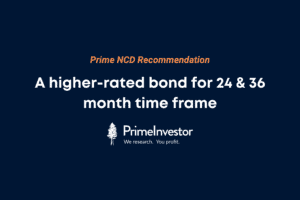Our quarterly mutual fund ratings review (for the quarter ended March 2020) has been completed. We have published the new ratings in the Prime Ratings page. In this article, we highlight some of the noteworthy changes and the reasons for the same. Do note that the funds we’re discussing here are not the only ones that have seen rating changes.

It is important for you to note that Prime Ratings is not our recommendation for funds. It helps you know how a fund has performed vis-à-vis its peers. Sometimes, despite our efforts to provide appropriate weights to risk metrics, the risks in some funds, especially in debt, may be masked until they transpire. Therefore, while a fund’s rating may seem high, you may be taking on more risk than you should.
Hence, it is important for you to go beyond ratings to make decisions. We do this for you! Our MF Review Tool will let you know whether to buy, hold, or sell your fund. We incorporate qualitative, market, and other quantitative metrics along with Prime Ratings to give these buy/sell/hold calls. For fresh investments, use our list of Prime Funds to make your fund choices.
This article will only talk about key changes in ratings and not any recommendation changes. The rating changes mentioned in parenthesis is the star rating change from Dec-19 to Mar-20. Higher the star rating, the better the performance.
Equity funds
We’re highlighting select funds that saw a change in ratings. We have also tried to throw some light on their performance.
Large-cap funds
Continuing the trend that began a couple of years ago, large-cap funds are still struggling to beat the Nifty 100 TRI. That large-cap funds were losing their sheen is something we have talked about already. With the faltering performance, funds that once ranked steadily among the best have slipped down. Some of these are mentioned in the table below.
| Fund name | Current rating | Dec-19 rating |
| Aditya Birla Sun Life Frontline Equity | 2.0★ | 2.5★ |
| ICICI Prudential Bluechip | 3.5★ | 4.0★ |
| HDFC Top 100 | 3.0★ | 3.5★ |
| Franklin India Bluechip | 1.0★ | 1.5★ |
Note: The funds mentioned are a few of those with rating changes. It is not an exhaustive list.
Aditya Birla Sun Life Frontline Equity, for example, had earlier had the unique distinction of being able to beat the market in both bearish and bullish cycles. However, owing to stock calls not paying off earlier and the polarised index, the fund hasn’t been able to recover. Even on a 3-year basis, the fund outperforms the Nifty 100 TRI just 32% of the time in the past 6-year period. Similarly, Franklin India Bluechip, historically known for low volatility, has not held up in this latest market correction. The fund hasn’t beaten the index at all in the past 4 years.
Among the top-rated funds, both Mirae Asset Large Cap and Axis Bluechip continue to remain steadily far better than peers and retain their ratings.
Multi-cap funds
In Prime Ratings, we put together different SEBI-defined categories that have the same characteristics in order to get the right picture of performance. Therefore, along with multi-cap funds, we also include focused funds with a multicap approach as well as value/contra and dividend yield funds.
In this set, what stands out is the worsening performance of most value funds (i.e., all funds that followed a value strategy and not just the value/contra category). Since value as a strategy has been hit hard with the market’s quality-only preference, funds have seen cyclical picks remain laggards compared to the index. Some of the value-based funds to see a rating drop are mentioned in the table below.
| Fund name | Current rating | Dec-19 rating |
| HDFC Capital Builder Value | 3.0★ | 3.5★ |
| Franklin India Equity | 2.0★ | 2.5★ |
| ICICI Pru Value Discovery | 2.0★ | 2.5★ |
| Templeton India Value | 1.5★ | 2.5★ |
| Tata Equity P/E | 3.5★ | 4.0★ |
ICICI Pru Value Discovery and Franklin India Equity are two examples of funds that have earlier been strong performers that have taken a hit due to their value-based buy-and-hold strategy. Funds that adopted a more blended approach, by mixing some growth-style stocks, or those that adopted a growth-at-reasonable-price approach managed the better. For example, Invesco India Contra (in Prime Funds) has retained its 4.5 rating, as has Kotak Standard Multicap. On the plus side, some funds such as L&T India Value, that saw a drastic drop in performance post recategorisation appears to have stabilised.
Remember, however, that performance is poor in several of these funds because cyclical stocks and sectors only just began to pick up from September 2019 to January 2020, after which the correction set in. This doesn’t automatically signal an exit from these funds. To know which fund is worth holding on to and which can be removed from your portfolio, use our MF Review Tool.
Top-rated funds have remained 5/4.5/4 star funds barring a few exceptions. One is Canara Robeco Equity Diversified (from 4 to 4.5), that steadily improved across many metrics including consistency, volatility and performance during market upsides. Another is UTI Equity (from 3.5 to 4), whose strategy change to growth helped it turn performance around over the past two years after a prolonged slump and improve metrics such as consistency and risk-adjusted returns.
Mid-cap funds
In this category, the top-rated and only 5-star fund is Axis Midcap with the lowest downside containment score. This is in part due to the fund’s shift into debt and cash at 10-18% of its portfolio even in early 2019, which supported returns and pushed performance ahead. But be a little wary on relying excessively on the fund’s performance; cash holding always poses the threat of timing re-entry right, in the right set of stocks. Failure to so can hurt. And the fund has seen patchy returns in earlier years such as 2015.
Franklin India Prima (from 4 to 3.5) slippage in ratings is not due to any change in the fund’s performance itself, but more because Invesco India Midcap (from 3.5 to 4) improved. The Invesco fund has been improving slowly from early 2018 onwards, moving past Franklin in some metrics such as nearer-term consistency. Another fund that has been improving is BNP Paribas Midcap (from 2 to 2.5). We’re noting this performance shift despite its low rating as it among the top funds in the previous mid-cap rally.
Small-cap funds
In this category, SBI Small Cap (from 4.5 to 5) scored especially well in the consistency and risk-adjusted return metrics. HDFC Small cap (from 4 to 3.5) has however dropped one rung owing to a surge in Axis Small Cap’s (3.5 to 4.5) rating. The Axis fund is a recent rating entrant. It’s closed-end structure earlier besides high cash calls helped it manage better. Continued underperformance of L&T Emerging Businesses (5 to 3.5) affected its score across metrics, whether consistency, downside containment or others.
Aggressive hybrid
This category has seen fairly steep rating changes, owing to funds’ ability to navigate the volatile equity markets. Those that took quicker debt calls or were less aggressive saw their returns push ahead of others.
Canara Robeco Equity Hybrid (from 4 to 5) is one such fund that significantly improved on downside containment. In contrast, more aggressive funds ICICI Prudential Equity & Debt and HDFC Hybrid Equity both fell out of the 5-star rating they had earlier. For these funds, their comparatively more aggressive nature saw them lagging more conservative peers which affected their score on metrics such as Sharpe ratio.
In general, however, aggressive hybrid funds tend to be less consistent and often move ahead of the category only to suddenly lag. Among these funds, ICICI Pru Hybrid Equity & Debt and HDFC Hybrid Equity are the only two funds that have been consistently in the top quartile of performers. Therefore, a drop or rise in aggressive hybrid fund ratings needs to be looked at carefully. Use our MF Review Tool to check our call on the funds.
Hybrid – Balanced advantage/dynamic asset allocation
The performance in this category of funds is determined by how much open or hedged equity they hold in different market conditions.
The most popular fund in this space, ICICI Pru Balanced Advantage (from 5 to 4), shed its rating by a notch as a result of marginally higher net equity than peers in the past few months of volatility. DSP Dynamic Asset Allocation (from 4.5 to 5), on the other hand, contained downside far better with lower equity and thus moved up in ratings. It is noteworthy that when 1- year returns are rolled daily for a 3-year period, ICICI BAF beats the category 68% of the times as opposed to 48% with DSP. The latter is slowly catching up, though, in the recent bear market as it contains downsides better. Please see our Prime Funds list to know which fund we prefer.
Debt funds
In the debt space, we are focusing primarily on those funds whose ratings have fallen as this trend is important to know deterioration in your fund’s performance. Sometimes, a mere hike in credit risk can cause our ratings to dip which acts as a notice of impending risks.
Liquid funds
In the liquid fund space, JM Liquid (from unrated to 4.5) entered our ratings universe as its AUM increased beyond our Rs 1,000 crore cutoff. Low maturity (which also reduces volatility) and above category average performance on all return metrics pushed it to the top. However, we would urge you to stay cautious, given that a liquid fund with such compact AUM can see redemption pressures causing NAV impact. Also, historical performance of JM funds provides less confidence in terms of consistency.
Ultra short/low duration/money market funds
Franklin India Ultra Short Bond (4.5 to 3) took a sharp hit after it decided to fully mark down the Vodafone paper in its books. This impacted the fund’s average returns as well upped its standard deviation. It is noteworthy that we asked investors to prune exposures in this fund in November, based on your individual exposure to the fund. Look out for our coverage of change in Prime Funds to know more about this fund.
Once a highly consistent performer, UTI Treasury Advantage (from 2 to 1) is now struggling to recover from the hit it took on DHFL papers and it continues to grapple with AUM outflow. Assets further dipped 11% over the March quarter.
Short Duration funds
Mirae Asset Short Term (from unrated to 3.5) is off to a good start on its entry into our rating universe. Our gating criteria for this category requires the completion of at least 2 years since launch. With good quality credit and above average returns, the fund is coming up. Its high expense ratio (small AUM) is the only sore point at this juncture.
An already high-risk fund, Franklin India Short Term Income Plan (from 3.5 to 1.5) suffered a double whammy of Vodafone and Yes Bank write-offs over the last quarter. Our rating methodology had recognized the fund’s extraordinarily high risk despite the strong returns, giving it a modest 3.5 star rating even before the write-offs. This rating now stands further downgraded.
Medium Duration/Corporate Bond funds
Franklin India Income Opportunities (3.5 to 2) holds among the highest credit risk in this category with an average 77% (past 1 year) in instruments below AA+ rating. A part of this risk materialized in the form of Vodafone debt. This fund was never in our recommendation list but you might want to check our Review Tool to know what to do with it.
A low average maturity and superior YTM has helped Reliance Prime Debt (3.5 to 4) climb up, despite minor setbacks it faced earlier. However, its concentration in top holdings in private corporate papers must be taken note of. Please check our Review Tool for our call on the fund.
SBI Magnum Medium Duration (from 3 to 3.5) has steadily performed on consistency and has an edge in a rate-driven bond price rally, with duration above categoryaverage. However, with an average 37% in papers rated less than AA+, its risk profile is higher than the category. You might want to check our call on this fund in our Review Tool before investing.
Credit Risk funds
Franklin India Credit Risk (4.5 to 3.5) was another fund where we had highlighted the risk as early as November 2019. It held the same papers as the other Franklin funds mentioned earlier and took NAV hits. Investors should not be lured by the high double-digit YTM, given the current crisis environment we have stepped into.
SBI Credit Risk (from 3 to 4), on the other hand, calls for special mention, given its high diversification, better quality of papers and importantly more realistic yields at around 8.4%. This has helped the fund deliver the highest Sharpe in the category though not the highest returns.
Dynamic bond funds
After a series of unfortunate hits to its papers, beginning from the IL&FS crisis, UTI Dynamic Bond (2.5 to 1) has been struggling to recover, favorable rate rally notwithstanding. The road to recovery still appears long with 1-year returns still at around a negative 5%.
So this sums up key rating changes. Over this week and the next we will also be covering
- key changes to our MF review list (buy/hold/sell list) which is already updated on the platform.
- changes to our recommended list of funds – Prime Funds
- Any changes to the recommended portfolios we have, if you are following them.
Do look out for them and take action if needed!




6 thoughts on “Quarterly Review: Gainers and losers in Prime Ratings”
1. How does layman like me identify a particular fund follows a value buy-hold strategy (apart from their underperformance since 2014)?
2. Are there any specific data indicators that Prime follows? If I follow Morningstar stylebox, Franklin India India (Growth 33%, Blend 47%, Value 16%) and Kotak Standard Multicap (Growth 50%, Blend 43%, Value 3%). Is this a crude way to identify them?
3. I have committed to such value buy-hold strategy funds for a very long time and it is testing my patience? From a portfolio construction perspective within the multicap space, I am happy to follow Prime advice to “Hold” to such funds, if I need to increase my allocation to new funds, should I add Growth style funds?
4. If Prime would have existed 5 years back, would you have recommended a Kotak Standard Multicap as 5 star or Franklin India Equity as 5 star in 2014, I am trying to decipher if the rating is for the momentum and current trend, rather than for the future (what happens for next 5-7 years, if value picks up, as your recommendation is for Growth funds which have done well for last 3 years)
Sorry a long list of questions, Thanks in advance
Hi,
1. No, a lay investor cannot figure out whether a fund is value or growth. It needs understand of markets, valuations, sector prospects and much more. Which is why we do the analysis and recommend 🙂
2. We look at several factors when we’re analysing markets, funds, and strategies. Styleboxes are very general ways of identifying funds as most will be blended strategies. There are very few pure value and pure growth funds, so it requires understanding of where the fund leans.
3. It is always ideal to mix value and growth funds in your portfolio, and not depend only on one type of style. So when value underperforms, growth will support and vice versa.
4. No mutual fund rating system can be futuristic. Prime Ratings looks at performance across different time periods and is not influenced by short-term performance. Prime Funds has funds following different investment styles; we draw this list based on ratings, other quantitative factors, as well as qualitative factors such as fund strategy, market scenario, and so on. This is where understanding of where markets are headed and how funds can benefit and perform is involved.
Thanks,
Bhavana
Thank you Bhavana,
1. Would it be possible in the prime recommendation to indicate the funds as, Value Buy & Hold or Growth.
2. My current multicap allocation is 52% of my equity portfolio, which is split between HDFC Equity @ 15%, Franklin India Equity @ 18% and ABSL Equity @ 19%, I have held them since 2007. Which of these are Value – Buy & Hold or Growth. Which of the Prime funds will be a good portfolio differentiator and how would you recommend me to allocate?
Hello Sir, Thank you for writing to us. As a subscriber, please ask questions on our recommendations ALONE to contact@primeinvestor.in. Please note we are not allowed to do any portfolio planning or portfolio building for individuals under our RA (research analyst) license. We have stated this in our website https://www.primeinvestor.in/what-is-primeinvestor/ Request you to please go through it.
We are allowed to recommend products and provide follow up on them. We also build asset allocated, strategy mixed portfolios that are simple enough for investors to follow. Investors have to choose what they need and we state what is suitable for what time frame and risk.
We will be happy to answer questions specific to our recommendations. thanks, Vidya
Team PI,
After I finish reading the article, can we briest the entire article as its difficult to remember all changes. We can design a table where the gist of the article is presented so that one can remember what all was presented above.
Hello Sir, true and point noted. but giving a gist of ALL the changes is a lot and won’t be possible. So we highlighted only few. Presenting the few as a table would mean inevstors misunderstanding it as the only changes that we have made. We have highlisted important ones in table. We will be giving table for our list of changes in recommendations when we write about it in comign days. Ratings are just pointers to trend changes. thanks, Vidya
Comments are closed.